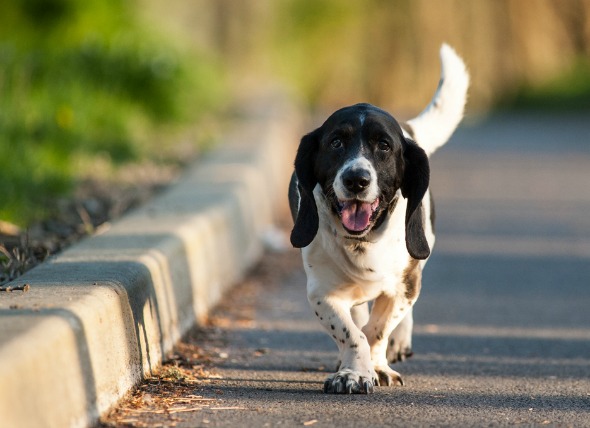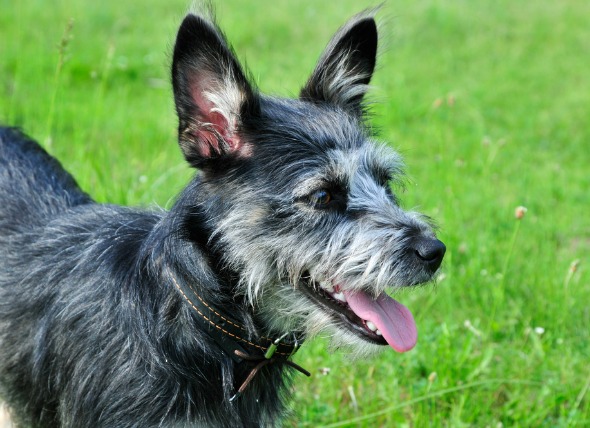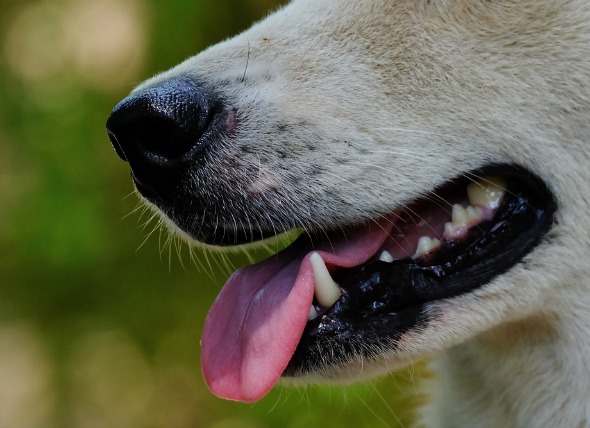

Lameness is a clinical sign of a more severe disorder that results in a disturbance in the gait and the ability to move the body about, typically in response to pain, injury, or abnormal anatomy.
Lameness may involve one or more limbs and varies in severity from subtle pain or tenderness to an inbability to place any weight on the limb (i.e., carrying the leg). If only one forelimb is involved, the head and neck move upward when the affected limb is placed on the ground and drops when the unaffected limb bears weight. Meanwhile, if only one hind limb is involved, the pelvis drops when affected leg bears weight, rises when weight is lifted. And if both hind limbs are involved, forelimbs are carried lower to shift weight forward. In addition, lameness may become worse after strenuous activity or alleviate with rest.
Other signs and symptoms associated with lameness include:
Forelimb lameness in still growing dogs that are less than 12 months of age
Forelimb lameness in mature dogs that are older than 12 months of age
Hindlimb lameness in growing dogs that are less than 12 months of age
Hindlimb lameness in mature dogs that are greater than 12 months of age
Risk Factors
Your veterinarian will perform a thorough physical exam on your pet, taking into account the background history of symptoms and possible incidents that might have led to this condition. Standard tests include a complete blood profile, a chemical blood profile, a complete blood count, and a urinalysis.
Because there are so many possible causes for lameness, your veterinarian will most likely use differential diagnosis. This process is guided by deeper inspection of the apparent outward symptoms, ruling out each of the more common causes until the correct disorder is settled upon and can be treated appropriately.
Your veterinarian will first try to differentiate between musculoskeletal, neurogenic and metabolic causes. The urinalysis may determine whether a muscle injury is reflected in the readings. Diagnostic imaging will include X-rays of the area of the lameness. Computed tomography (CT) scans and magnetic resonance imaging (MRI) will also be used when appropriate. Your doctor will also take samples of joint fluid for laboratory analysis, along with tissue and muscle samples in order to conduct a muscle and/or nerve biopsy to look for neuromuscular disease.
Treatment will depend on the underlying cause. If your dog is overweight, you will need to make changes in the dog's daily diet. Your veterinarian will assist you in creating a food plan that will best work for your dog according to its breed, size and age. There are several medications that can be used to treat the symptoms and underlying causes your dog is suffering from. For example, pain relievers may be prescribed, along with steroids that can be used help to reduce inflammation in the muscles and nerves, allowing healing to take place.
Your role and that of your veterinarian in the period following treatment will vary according to the diagnosis.
If you have a large breed dog, you will need to be on guard against allowing your dog to gain excess weight. Conversely, if your dog is a very rambunctious and energetic breed, you will want to observe the dog, and take note of any changes in movement or behavior after exercising, as some highly energetic dogs have a tendency to overdo it.
 Slipped Disc, Bad Back, and Muscle Spasms in Dogs
Intervertebral Disc Disease (IVDD) in Dogs
Interv
Slipped Disc, Bad Back, and Muscle Spasms in Dogs
Intervertebral Disc Disease (IVDD) in Dogs
Interv
 Inflammation of the Esophagus in Dogs
Esophagitis in Dogs
Gastrointestinal reflux, or a
Inflammation of the Esophagus in Dogs
Esophagitis in Dogs
Gastrointestinal reflux, or a
 Blood Transfusion Reactions in Dogs
There are a variety of reactions that can occur w
Blood Transfusion Reactions in Dogs
There are a variety of reactions that can occur w
 Swelling of the Salivary Gland in Dogs
Salivary Mucocele in Dogs
An oral or salivary muc
Swelling of the Salivary Gland in Dogs
Salivary Mucocele in Dogs
An oral or salivary muc
 Brain Inflammation Due to Parasitic Infection in Dogs
Encephalitis Secondary to Parasitic Migration in Dogs
&n
Brain Inflammation Due to Parasitic Infection in Dogs
Encephalitis Secondary to Parasitic Migration in Dogs
&n
Copyright © 2005-2016 Pet Information All Rights Reserved
Contact us: www162date@outlook.com